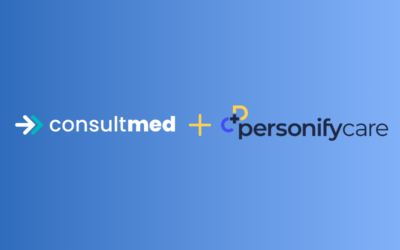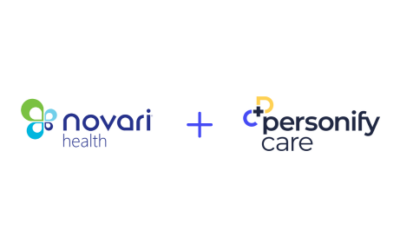We saw something shift in the last few months of 2020. We seemed to reach a tipping point in healthcare technology where the cost of inaction is actually higher than the cost of action.
If there’s a silver lining to this awful pandemic; it has shown that digital health solutions can enhance clinical care, rather than get in the way of the personal relationship between healthcare teams and their patients. It has demonstrated that there is a better way that can (at scale) reduce pressure on healthcare staff, reduce costs on the health system and provide a better care experience.
Communicating with patients the old way because “it’s the way we’ve always done it” is breaking down really quickly. Health services are dealing with increased demand and frontline health workers are already at the limits of “doing more with less”.
Healthcare teams big and small, in private and public settings, are meeting this challenge head-on. Here’s a look at the digital health trends we’re seeing across health services as we kick off 2021:
- From ‘Portals’ to ‘Personalisation‘
- From ‘Big-Bang Projects’ to ‘Team-based Solutions‘
- From ‘Analytics’ to ‘Just-in-Time Health Information‘
- From ‘Keeping-Up’ to ‘New Models of Care‘
1. From ‘Portals’ to ‘Personalisation‘
Personalisation of the patient experience is taking a significant step forward. Healthcare teams are moving beyond the first wave of digitisation of paper forms into patient portals. Clinicians are now supported to reach patients at the right time, when they need it most.
Technology should enhance human interactions, not replace them.
To date, paper forms and phone calls have been the norm in hospitals around the world. Technology’s role is now to enhance the human interactions between clinicians and patients, rather than replace them.
There’s a real opportunity to personalise the experience based on the information they’re providing, their risk profile, and their procedure. Equally, for staff we can now use data to identify clinical risks, administrative hold-ups or high risk patients. We can free up more of their time to do what they do best – provide great care to the patients that need it most.
Telehealth is now firmly part of the patient journey.
The workflow for both nursing and admin staff before and after (what used to be) a face to face assessment has changed. Staff can no longer hand a patient a sheet of paper to capture their history prior to an in-person assessment for example.
Healthcare teams using dynamic patient pathways can have more meaningful patient interactions by better preparing patients for the Telehealth visit, collect patient history in advance, and then manage their progress after their assessment. One of the most practical problems we see health services solving is “how do I capture the patient history when they’re not in a physical waiting room where I can hand them a pen and paper?”
Solve real day-to-day problems
Modern solutions need to be unified and solve real day-to-day problems for staff and patients, at the same time. Digital patient experiences need to work for any age, any population, on any device. Patient-centred design must result in reducing the friction for hospital staff while giving them practical and timely information that can be used in caring for their patients.
Digital forms just don’t cut it anymore. We’re seeing a rapid shift towards personalised patient pathways that deliver the best of both worlds: a better patient experience and lower administrative burden for healthcare teams.

Summary of moving from ‘Portals’ to ‘Personalisation’:
– Static patient portals have reached their used by date.
– Shift toward unified patient pathways that result in a better patient experience and lower administrative burdens
– Patients only fill in the information they need to, once, at the appropriate time
– Staff get information extracted and surfaced to them in key areas, without having to manually review data
2. From ‘Big-Bang Projects’ to ‘Team-based Solutions’
Digital transformation doesn’t need years of scoping to have real impact for clinical teams.
These top down digital transformation initiatives have their place. However, they need to be supported by the ability for teams on the ground to rapidly solve practical problems in their specific context. A cancer nurse in country Victoria is going to have a different set of challenges to a pre-admission team dealing with new COVID-19 screening requirements. Both problems need be solved but can’t wait for a 1-2 year strategic review to be finalised. Approaching digital with an agile approach, health services can solve day-to-day problems for clinical and administrative teams. Plus have solutions implemented, tested and solved close to the source – in weeks, not years.
Health services across the world are shifting to this systems approach because they have limited choices. With the ever-growing demand on finite hospital resources and budgets, the rapid development of tools; healthcare teams have to rapidly adapt to the increasing demands. Adoption of technology in 2021 and beyond should no longer be big and slow., Interoperability, security and privacy should be a given (not a feature).
Summary of moving from ‘Big-Bang Projects’ to ‘Team-based Solutions’:
– Digital transformation + team-based solutions. Strategy + quick wins. Not either or…
– Rapidly solve practical problems, test if it works and is worthwhile continuing or extending
– Reduced business cost, risk and involvement upfront
– Easier for teams to rapidly adapt to changing processes
3. From ‘Analytics’ to ‘Just-in-Time Health Information‘
The promise of healthcare analytics to deliver population-level improvement to our health system is unquestionable. However, with no data about much of the patient journey (because it’s still within paper forms and phone calls), we’re seeing rapid recognition that to deliver on that promise, you need to start with getting the right information to the right person (patient, provider, nurse etc). Regardless of where the patient is, at the right time. For example, understanding the value and impact of having;
- a patient being prepared for their admission the day before their surgery
- a patient knowing that their current recovery is abnormal
- a nurse knowing that one of their patients is having an adverse reaction now – rather than waiting for their upcoming appointment in 2 days
Having timely & relevant information flowing between patients and health services is the foundation on which a more complete picture of a person’s care journey can be gleaned by healthcare analytics.
Clinical productivity & patient outcomes can be enhanced via just in time health information from wearable tech, remote monitoring & pre-admission smart scanning (to name a few). Hospital teams are rapidly shifting from reactive to preventative care.

Summary of moving from ‘Analytics’ to ‘Just-in-Time Health Information’:
– If it’s on paper– it’s probably already out of date
– Population-level improvement to our health services can only happen if data is freed from paper forms and phone calls
– Timely & relevant information flow between patients and health services
– When you get that key bit of patient information, makes all the difference for avoiding a cancellation or preventing an adverse event
4. From ‘Keeping-Up’ to ‘New Models of Care’
‘Evidence-based care’ risks becoming a buzz word of our time. A phrase that looses meaning as healthcare teams struggle to maintain support for their growing, more complex patient lists. How are healthcare teams expected to deploy new models of care when they are already under extreme pressure to manage their existing workloads? We can’t keep asking healthcare teams to do more. Burnout of healthcare teams is real. If COVID-19 has highlighted anything it is that we need to take care of frontline health teams.
How new models of care are being supported
Healthcare teams don’t lack commitment. They care deeply about their patients and they have shown they’re able to adapt and deal with change in challenging circumstances. To adopt any of the evidence-based care protocols, what they need is some breathing room. Some space to consider how they fit in to their already stretched workflows.
Modern digital health solutions can give healthcare services this room to breathe. Automate the tedious, the repetitious, the frustrating administrative tasks that get in the way of patient care.
Digital health solutions can help healthcare teams free up capacity, and give them a realistic chance of combining existing workflows with new evidence-based care pathways to improve patient outcomes.
It’s exciting to see an increasing number of healthcare teams utilising these solutions to get well-established research off the academic shelf and into their workflows. Hospital teams are adapting their models of care to support better patient outcomes and experience.
Summary of moving from ‘Keeping-Up’ to ‘New Models of Care’:
– There’s no shortage of evidence-based models. Healthcare teams need breathing space to adopt them.
– Teams that have the most at stake are involved in the setup and continual improvement
– Automate the repetitious administrative tasks to ‘free up’ healthcare teams to adopt new evidence-based care models
– Collect and have comparable data to benchmark results of new processes
It’s been a real privilege in 2020, to watch up-close, some of the incredible work healthcare teams around the world have done to respond to the tough challenges the year presented. What’s even more exciting is some of the incredible results these teams are achieving for their organisation and their patients, within a matter of weeks.
By combining evidence, flexible patient pathways, and modern technology; they’re setting the foundation for their organisations to respond to future challenges and solving some practical problems for themselves and their patients along the way.
As we kick-off 2021, we’ll continue to share the practical examples of some of these trends to support our community adapt and learn together.



